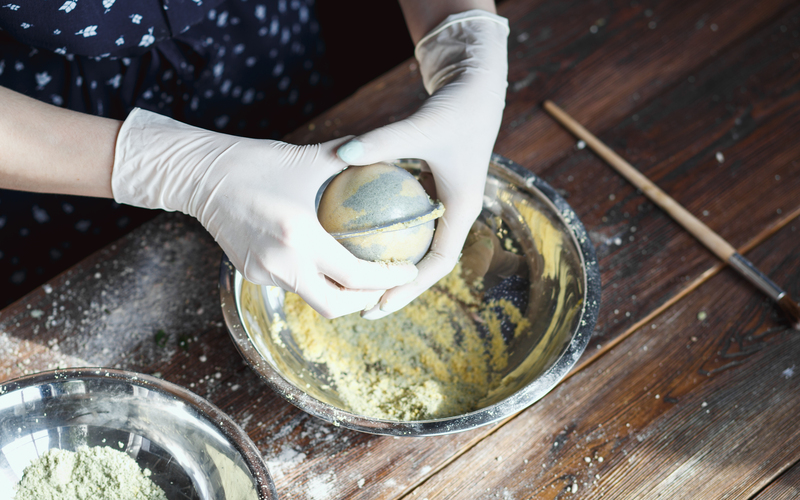Say Goodbye to Mould: How to Clean Window Sills
Posted on 18/08/2025
Say Goodbye to Mould: How to Clean Window Sills
Are you noticing unsightly black, green, or fuzzy patches on your window sills? Mould not only detracts from your home's appearance, but it can also affect your health and the indoor air quality of your living space. Learning how to clean window sills and remove mould is a vital part of maintaining a healthy home environment. In this comprehensive guide, we'll walk you through expert methods, safe cleaning procedures, effective prevention strategies, and eco-friendly tips to keep your window sills free from mould for good.
Understanding Mould: Why It Grows on Window Sills
Before diving into how to clean window sills covered in mould, it's essential to understand why mould thrives there.
- Moisture Accumulation: Window sills often collect condensation, especially in homes with poor ventilation.
- Poor Air Circulation: Lack of airflow around windows provides the perfect environment for mould spores to settle.
- Dirt and Organic Matter: Dust, pollen, and debris act as food sources for mould, increasing its growth potential.
These factors combined make window sills a prime target for mould spores, which can develop into visible colonies in as little as 24-48 hours under optimal conditions.

Health Risks Associated With Mould
Exposure to indoor mould can have serious health implications, especially for sensitive individuals. Common symptoms include:
- Allergic Reactions (sneezing, runny nose, itchy eyes)
- Respiratory Issues (wheezing, coughing, asthma attacks)
- Skin Irritations
- Headaches and Fatigue
Keeping your window sills clean and mould-free is not just about aesthetics; it's a crucial step to protecting your family's well-being.
Signs You Need to Clean Your Window Sills
Not sure whether your window sills need cleaning? Look out for these warning signs:
- Discolored patches (black, green, brown, or white)
- Musty odor around the windows
- Peeling paint or cracked sealant on sills
- Visible moisture or condensation
If you notice any of these, it's time to roll up your sleeves and clean mould off your window sills.
Step-By-Step Guide: How to Clean Mould From Window Sills
What You'll Need
- Protective gloves
- Face mask
- Old clothes
- Soft brush or old toothbrush
- Spray bottle
- Microfiber cloths or paper towels
- Bowl or bucket
- Mild detergent or dish soap
- White vinegar
- Baking soda (optional)
- Hydrogen peroxide (for stubborn mould)
Safety First!
Always wear gloves and a face mask when cleaning window sills with mould. Open windows for ventilation and avoid disturbing mould spores as much as possible.
Step 1: Remove Loose Dirt and Debris
Begin by vacuuming or wiping away dust, dirt, and loose matter from the sill. This step ensures you're working directly on the mouldy surface and not spreading extra particles.
Step 2: Prepare Your Mould Removal Solution
There are several effective cleaning solutions for removing mould from window sills:
- White vinegar (natural and effective): Pour undiluted vinegar into a spray bottle.
- Mild soap and water: Mix a few drops of dish liquid with warm water.
- Hydrogen peroxide (for stubborn patches): Use 3% hydrogen peroxide undiluted in a spray bottle.
Step 3: Apply the Cleaner Generously
Spray the chosen cleaner directly onto the affected areas of your window sill mould. Allow it to sit for at least 10-15 minutes to penetrate and break down the mould colonies.
Step 4: Scrub Away the Mould
Using a soft brush or old toothbrush, gently scrub the sill. For stubborn spots, sprinkle a bit of baking soda on the brush and continue scrubbing. This mild abrasive action helps lift deeply rooted spores without damaging the window sill surface.
Step 5: Wipe Clean and Repeat if Needed
Wipe down the sill with a clean, damp microfiber cloth or paper towel to remove all mould residue. For persistent growth, repeat the application and scrubbing process.
Step 6: Dry Thoroughly
Mould thrives in moisture, so it's critical to dry the window sill thoroughly after cleaning. Use paper towels or a dry cloth, and if possible, keep the window open to speed up drying.
Step 7: Dispose of Contaminated Materials
Discard used cleaning cloths, paper towels, and brushes in a sealed bag to prevent mould spores from spreading elsewhere in your home.
Preventing Mould Regrowth on Window Sills
Cleaning window sills is only half the battle; prevention is key for keeping them mould-free in the long-term. Here's how you can reduce the risk of mould coming back:
- Reduce Indoor Humidity: Use dehumidifiers, especially in damp rooms or during rainy seasons.
- Ventilate Regularly: Open windows and use exhaust fans to improve air circulation.
- Insulate Windows: Double glazing and insulated curtains can minimize condensation.
- Clean Sills Regularly: Wipe window sills at least once a week to remove dust and moisture.
- Repair Leaks Promptly: Check for any gaps in window sealing or frame leaks and fix them right away.
By maintaining a dry, clean environment around your windows, you'll discourage mould from ever gaining a foothold.
Eco-Friendly Solutions for Cleaning Window Sills
Worried about harsh chemicals? Natural solutions are often just as effective at removing mould from window sills. Here are some safe, eco-friendly options:
- White Vinegar: Naturally acidic, kills most common household mould species.
- Baking Soda: Mildly abrasive, great for scrubbing, and helps neutralize odours.
- Lemon Juice: Useful as a mild disinfectant with a fresh scent.
- Hydrogen Peroxide: Eco-safe bleach alternative (use with care).
Always test cleaners on a small, inconspicuous area first, especially if your window sills are painted, varnished, or made from sensitive materials.
Special Considerations for Different Types of Window Sills
How to Clean Painted Wood Window Sills
Painted wooden sills should be cleaned with gentle, non-abrasive methods to avoid stripping the paint. Use mild soap and water or diluted vinegar solutions, and always blot rather than rub for delicate finishes.
How to Clean uPVC or Vinyl Window Sills
uPVC and vinyl are resilient to most cleaners, but avoid using strong solvents or abrasive pads. A vinegar/water mixture effectively removes mould and restores shine.
How to Clean Stone or Marble Sills
Stone and marble are porous and can be stained by acidic cleaners like vinegar. Instead, use mild soap and warm water, and dry immediately to prevent watermarks.
How to Clean Metal or Aluminum Window Sills
For metal sills, mild detergents work best. Rinse and dry thoroughly to prevent rust or corrosion.
When to Call a Professional
If mould returns quickly after cleaning, covers a large area (>1m2), or appears to penetrate deep into walls or frames, consider contacting a professional mould remediation service. Extensive mould infestations can be hazardous and may indicate hidden leaks or structural issues.

Frequently Asked Questions: Cleaning Window Sill Mould
Can I use bleach to clean mould off window sills?
While bleach is commonly used, many experts recommend vinegar or hydrogen peroxide instead, as bleach can irritate lungs and damage some window sill materials.
How often should I clean my window sills?
Wipe window sills weekly to prevent the build-up of dirt and moisture, and perform a thorough clean at least seasonally.
Is mould on window sills dangerous?
Any visible mould has the potential to cause allergic reactions and respiratory problems--especially for vulnerable individuals. Prompt removal is always recommended.
Will cleaning with vinegar alone kill all types of mould?
Vinegar is effective against most, but not all, household moulds. For persistent or dangerous moulds (like Stachybotrys or black mould), seek professional advice.
Summary: Keep Window Sills Clean & Mould-Free
- Inspect window sills regularly for signs of mould growth.
- Act quickly at the first sign of discolouration or musty smells.
- Use natural, effective cleaning agents like vinegar, baking soda, and hydrogen peroxide.
- Always wear protective gear when cleaning mould.
- Dry thoroughly and improve ventilation to prevent recurrence.
Say goodbye to mould for good by following these window sill cleaning tips and preventative strategies. A little regular care will not only keep your home looking its best, but also protect your health and the value of your property.
Don't let mould take over your window sills--take action today with these proven cleaning methods!
```



